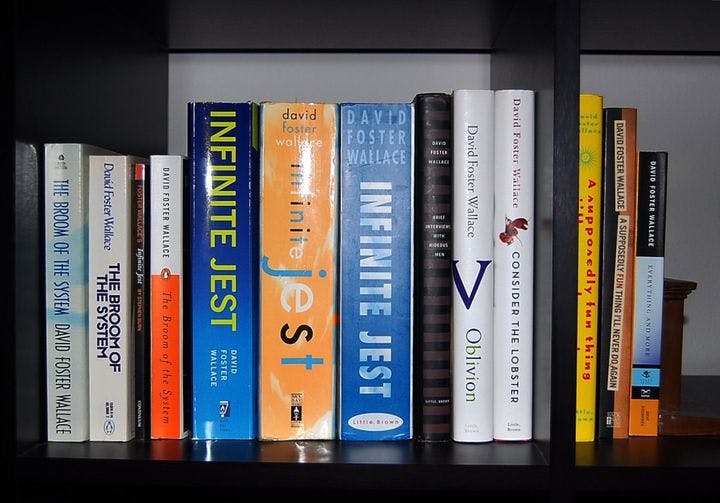Spring 2011
Why David Foster Wallace Looms So Large
– The Wilson Quarterly
Since DFW died, academics have been hard at work making Wallace the next canonized American writer.
When the celebrated writer David Foster Wallace committed suicide in September 2008, at the age of 46, scholarship on his dense, footnote-laced fiction and nonfiction was sparse. Since then, academics have been hard at work filling the void, essentially making Wallace “the next canonized American writer.”
Academic studies of the literary lion have proliferated for a number of reasons, writes Jennifer Howard, a senior reporter at The Chronicle of Higher Education. One is that Wallace’s writing—typified by the 1,100-page Infinite Jest (1996), an “epic, ironic, lonely-in-the-crowd, cri de coeur of a novel”—has all the makings of scholarly fodder.
Wallace’s work also broke the prevailing literary mold. In the opinions of some ivory tower denizens, he moved beyond the abstruse postmodernism of Thomas Pynchon, John Barth, and Don DeLillo—American novelists who seemed to own the future of the canon in the 1970s and ’80s. Unlike these bleak writers, Wallace did not seek to unmask “the hollow hypocrisy of the bourgeois social order,” Marshall Boswell, an English professor at Rhodes College, tells Howard.
Writing in The Common Review, Rebekah Frumkin agrees, arguing that Wallace’s allure derives in part from how earnestly he writes about moral questions present-day American novelists have been reluctant to address directly. His fiction and essays take on a range of complex subjects (mathematics, drug addiction, and the influence of the mainstream media, to name a few), but they are also about “trying your best to be a good, kind human being in a hostile world; about telling the Truth; about admitting your vulnerabilities and sincerely seeking help from others,” Frumkin, a student at Carleton College, writes.
There is some opportunism at work in the dawn of Wallace studies. The scholars drawn to his work are generally young, and they see in the great writer’s output a chance not only to plumb a contemporary but also to stake their professorial quills on unmarked scholarly terrain—mountains of Wallace’s papers are newly available at the Harry Ransom Center at the University of Texas, Austin. The curator of the Wallace archive says the impressive resource may help archival research become “more central to the work of a new generation of scholars.”
With all the activity Wallace is inspiring in the ivory tower, his loss is arguably most keenly felt in the coffee shops where literary aspirants hone their craft. He has had an “immense and wide-ranging influence on the direction of contemporary American fiction,” Boswell tells Howard. “Jonathan Franzen, George Saunders, Zadie Smith: All are indebted to Wallace.” Scholars (and fans) don’t have to content themselves solely with his surviving peer fiction writers just yet—The Pale King, Wallace’s unfinished last novel, has just been published.
* * *
The Source: "The Afterlife of David Foster Wallace" by Jennifer Howard, in The Chronicle Review, January 6, 2011, and "Our Psychic Living Room" by Rebekah Frumkin, in The Common Review, Fall-Winter, 2010-2011.
Photo courtesy of Flickr/Ryan Healy
